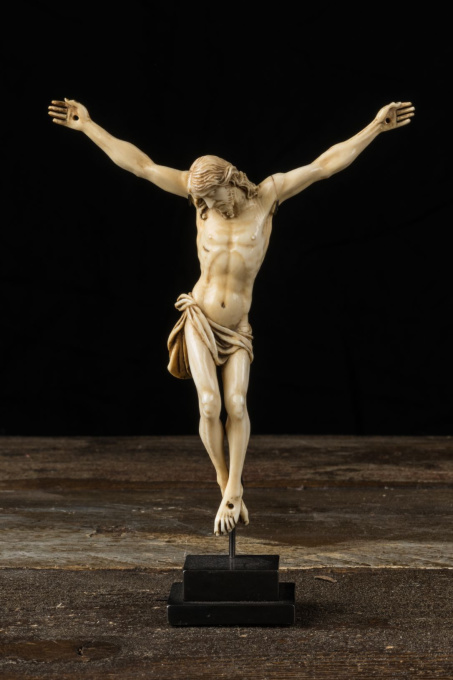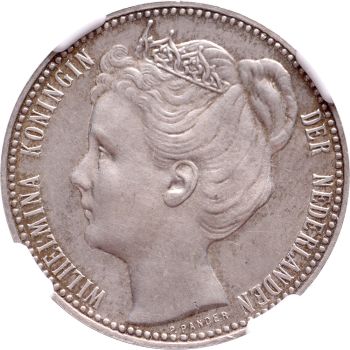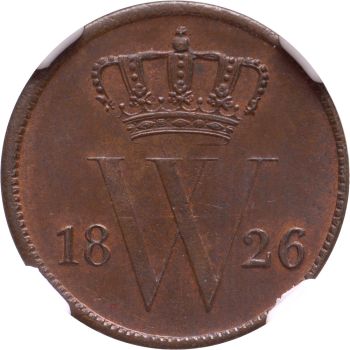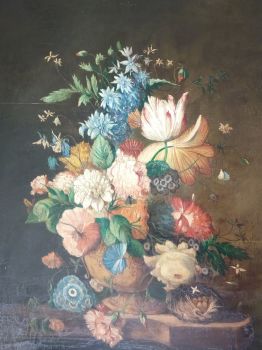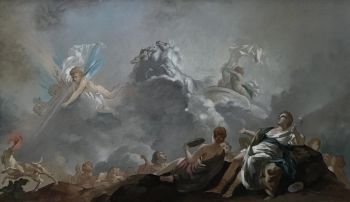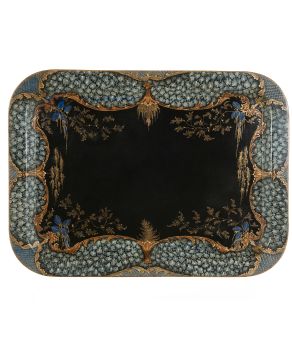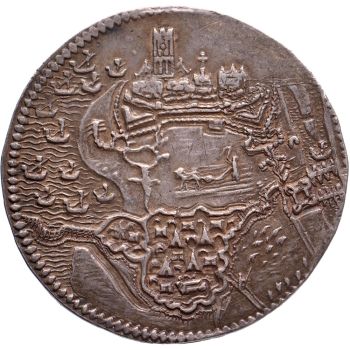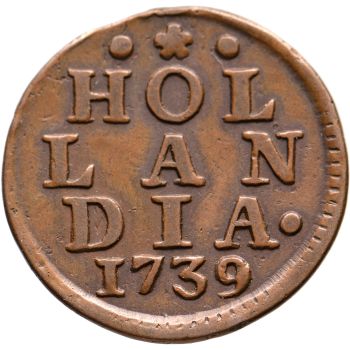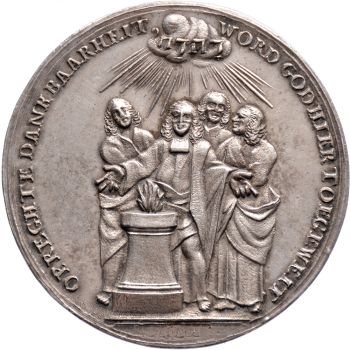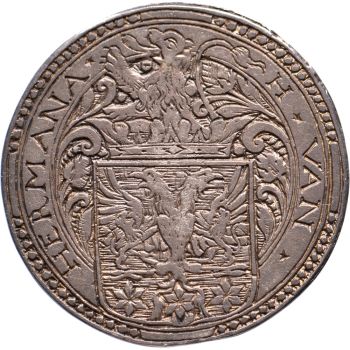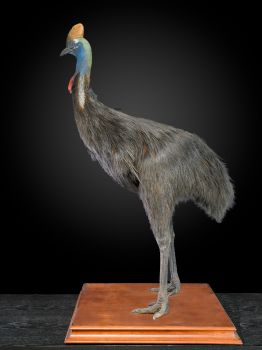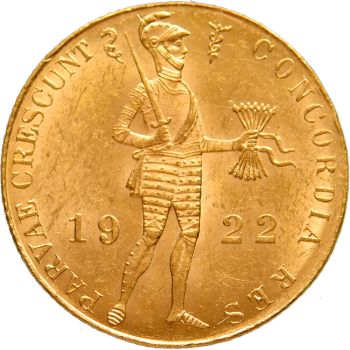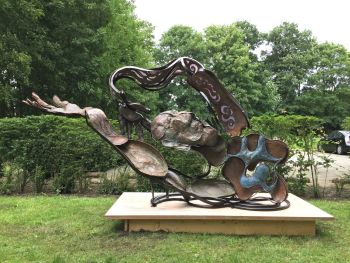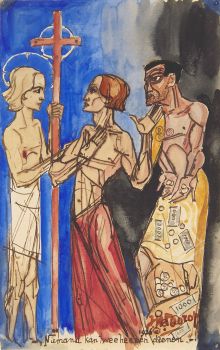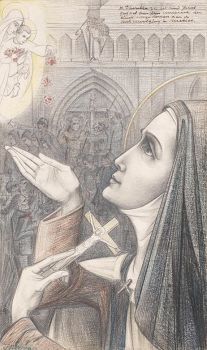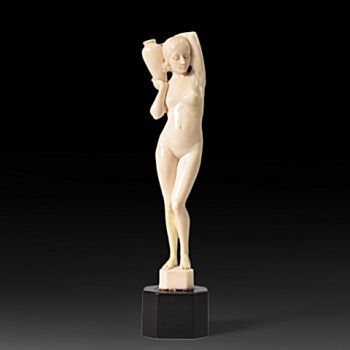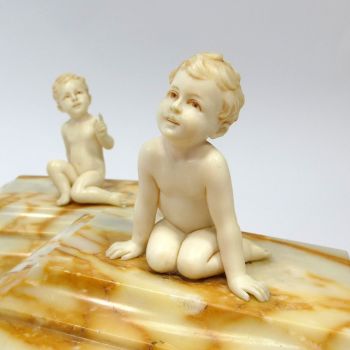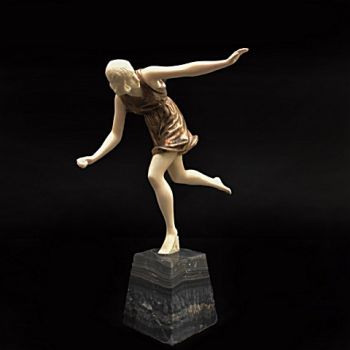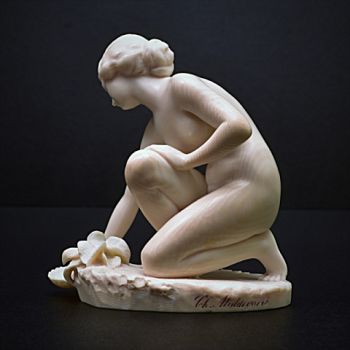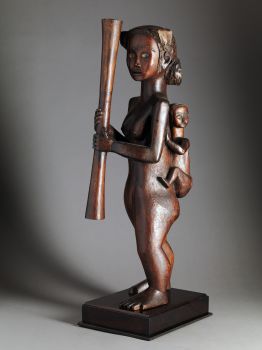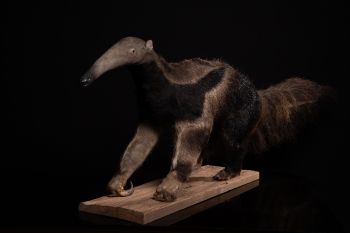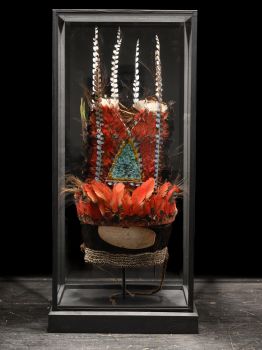17th C Very Finely Carved ivory Crucified Christ, Flemish Shool. 1680 - 1690
Artista Sconosciuto
ossoAvorio
14 ⨯ 11 ⨯ 2 cm
ConditionVery good
Attualmente non disponibile tramite Gallerease
Spectandum Gallery
- A proposito di opere d'arteThis crucified Christ, originally nailed to a wooden cross, exhibits exquisite lines. The rotation of the hips, emphasized by the folds of the perizonium, lends great strength to the sculpture. The visibility of the ribs evokes, in a sense, the serenity in Christ's suffering. The opening of new maritime routes along the coasts of East and West Africa in the 17th century stimulated ivory sculpture in the Netherlands and Central Europe. African ivory, with its creamy white color, had the advantage of being easily carvable, without the risk of breaking too easily. Ivory objects, finely carved in the smallest details, were highly valued by princes and wealthy citizens who displayed them in their "Kunstkammer" (art cabinets). Ecclesiastical authorities were also fond of ivory sculptures with religious themes for their treasuries. Subjects of devotion, such as the Passion or the sufferings of Christ, were particularly sought after.
- A proposito di opere artista
Può succedere che un artista o un creatore sia sconosciuto.
Alcune opere non sono determinate da chi sono state realizzate o sono state realizzate da (un gruppo di) artigiani. Esempi sono statue dell'antichità, mobili, specchi o firme non chiare o leggibili ma anche alcune opere non sono affatto firmate.
Inoltre puoi trovare la seguente descrizione:
•"Attribuito a …." A loro avviso probabilmente opera dell'artista, almeno in parte
•“Studio di ….” o “Officina di” A loro avviso un'opera eseguita nello studio o nella bottega dell'artista, eventualmente sotto la sua supervisione
•“Cerchio di…” A loro avviso un'opera del periodo dell'artista che mostra la sua influenza, strettamente legata all'artista ma non necessariamente al suo allievo
•"Stile di..." o "Seguace di..." A loro avviso un'opera eseguita nello stile dell'artista ma non necessariamente da un allievo; può essere contemporaneo o quasi contemporaneo
•“Modalità di…” A loro avviso un'opera nello stile dell'artista ma di epoca successiva
•"Dopo …." A loro avviso una copia (di qualsiasi data) di un'opera dell'artista
•“Firmato…”, “Datato…” o “Iscritto” A loro avviso l'opera è stata firmata/datata/inscritta dall'artista. L'aggiunta di un punto interrogativo indica un elemento di dubbio
•"Con firma....", "Con data...", "Con iscrizione..." o “Riporta firma/data/iscrizione” a loro avviso la firma/data/iscrizione è stata aggiunta da qualcuno diverso dall'artista
Sei interessato ad acquistare questa opera d'arte?
Artwork details
Related artworks
- 1 - 4 / 12
Artista Sconosciuto
Een Gotische zuidelijke Nederlanden wandklok1580 - 1590
Prezzo su richiestaNico van den Assem restauratie
Artista Sconosciuto
A Surinam-themed Amsterdam long-case clock1746 - 1756
Prezzo su richiestaZebregs & Röell - Fine Art - Antiques
 A cura di
A cura diGallerease Magazine
Artista Sconosciuto
A pair of angels Antwerp, 17th century, Carrara marble17th century
Prezzo su richiestaFrederik Muller
Johannes van Dreght
Antique Dutch still life flowers in vase1740 - 1800
Prezzo su richiestaGallerease Selected
 A cura di
A cura diDanny Bree
Artista Sconosciuto
Verre à boire Cristallo façon de Venise1600 - 1650
Prezzo su richiestaPeter Korf de Gidts - Antiquairs
1 - 4 / 24Artista Sconosciuto
Two Centaurs, France or Italylate 18th
Prezzo su richiestaRobert Schreuder Antiquair
1 - 4 / 24- 1 - 4 / 24
Artista Sconosciuto
UN NETSUKE IN AVORIO DI UN OLANDESE CHE GIOCA CON UN RAGAZZINO18th century
Prezzo su richiestaZebregs & Röell - Fine Art - Antiques
Artista Sconosciuto
UN PICCOLO NETSUKE IN AVORIO DI UN OLANDESE CON UN TAMBURO1750 - 1800
Prezzo su richiestaZebregs & Röell - Fine Art - Antiques
Artista Sconosciuto
UN NETSUKE MARINO IN AVORIO DI UN OLANDESE CHE TIENE UN FAN . CINESE18th century
Prezzo su richiestaZebregs & Röell - Fine Art - Antiques
Artista Sconosciuto
UN NETSUKE IN AVORIO DI UN OLANDESE CHE TIENE UN GALLETTO18th century
Prezzo su richiestaZebregs & Röell - Fine Art - Antiques
Artista Sconosciuto
IMPORTANTE E RARO GRANDE DIPINTO INDIANO "COMPANY STYLE" SU AVORIO RAFFIGURANTE UNA SFILATA1850 - 1900
Prezzo su richiestaZebregs & Röell - Fine Art - Antiques
 A cura di
A cura diDanny Bree
Artista Sconosciuto
Olandesi in miniatura (Netsuke)1700 - 1900
Prezzo su richiestaZebregs & Röell - Fine Art - Antiques
Artista Sconosciuto
UN RARO SADELI INDIANO COMPLETO DI LAVORO E SCRITTURA INTARSIATI1800 - 1850
Prezzo su richiestaZebregs & Röell - Fine Art - Antiques
Artista Sconosciuto
UN NETSUKE IN AVORIO DI UN OLANDESE CHE TIENE UN GALLETTO18th century
Prezzo su richiestaZebregs & Röell - Fine Art - Antiques
1 - 4 / 24- 1 - 4 / 8

